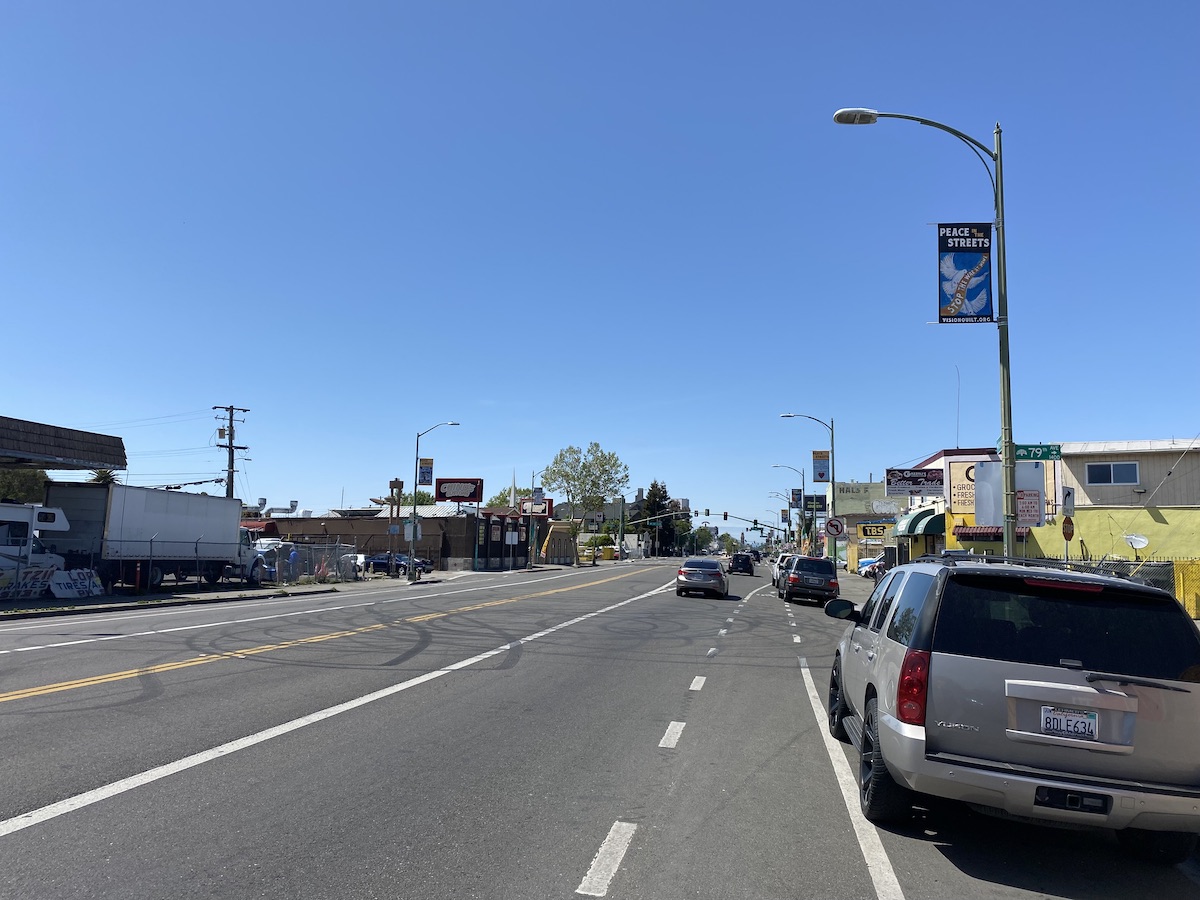
On Monday, Metropolis of Oakland Public Works launched a draft City Forest Plan—the primary important funding in Oakland’s city forest since 2008. The 173-page doc, now open for public remark by means of to December 8, outlines a number of methods for sustaining and rising Oakland’s city cover, from pruning and eradicating present bushes to planting new ones.
Oakland’s city forest—some 68,180 bushes starting from coast reside oaks in public parks, streetside London planes, and even the fruit bushes rising exterior resident properties and companies—has been in decline since 2014, with about 277 acres much less now than it had then.
The plan, which can be voted on by the Metropolis Council after it’s finalized subsequent yr, denotes completely different eventualities: a city-led state of affairs with an estimated $21 million in upkeep, or a $17 million different that depends on contractors. It additionally outlines completely different ranges of planning methods—together with the choice to plant nothing, and watch the tree cover recede by 2.9 p.c by 2034.
For Gordon Matassa, an city forestry challenge coordinator who lives and works in Oakland, placing collectively the plan was the fruits of 5 years of labor beneath a grant from Cal Hearth—it included surveying all of Oakland’s cover, planting 700 new bushes, and interesting with the neighborhood to draft the 50-year plan.
“I’m hoping issues transfer ahead as a result of I’m able to hit the bottom working, to get engaged on it as soon as it will get permitted,” he says.
The draft plan states town has thus far had a “reactive method” to its city forest—in follow, there was no useful tree service other than emergency elimination since 2008.
Funds cuts spurred by the recession in 2009 led to the termination of half town’s Tree Providers Division workers (from 40 to simply 15) and axing, so to talk, all different tree providers. Even now, Matassa says there may be no person from public works to name in case you want bushes planted, pruned, or eliminated. “We’re simply not in a position to present that service.”
Within the strategy of creating the draft, a staff of arborists surveyed everything of Oakland to develop a tree stock and flagged about 9 out of 10 bushes as overdue for a snip or ripe for elimination. That backlog of deferred upkeep, Matassa says, is a part of the rationale why the plan’s proposed funds is so excessive.
“We haven’t performed any tree upkeep in over 15 years. So the preliminary upkeep that does occur goes to be dearer and require extra work,” Matassa says. The hope is that the associated fee goes down because the years go by.
Since pruning and upkeep has fallen to the non-public sector and nonprofits, deprived communities will possible want their cover woes handled first. The plan locations an emphasis on fairness, and as soon as “grid pruning,” or a scientific block-by-block upkeep program, is underway, Matassa says deprived communities would be the first to see the advantages.
For him, the objective is “cover fairness”—proper now, Oakland has, total, a 21 p.c cover cowl. However some locations within the Oakland Hills have practically half of their city areas greened, whereas different census tracts present a 6 p.c protection. “Our objective is to get everybody as much as 21 p.c,” Matassa says.


“I’m hoping that my daughter—if she nonetheless lives in Oakland—will get to see, ‘Oh the wooden in East Oakland is rather like the wooden in [Oakland] Hills,’” Matassa says.
Funding, for whichever choice prevails, shouldn’t be assured. As an alternative, even after approval, it’s possible that public works officers might want to apply for grants or pull from town’s funds to make it occur.
The duty is tall (like, coast reside oak tall), however issues are transferring in the proper route, and Matassay is hopeful. As part of the Inflation Discount Act’s funding into city forests, the Metropolis of Oakland obtained an $8 million grant from the Division of Forest Providers that can fund upkeep, planting, and neighborhood engagement. Although the grant cash is a mere fraction of the $22.5 million that town had initially utilized for, Matassa says it’s part of a development in elevated funding that he has noticed extra typically. Prior to now few months, Matassa’s staff gained a brand new grant author centered solely on making use of for public works-related funding.
Ideally, Matassa says all cities would comply with the instance of San Francisco, which in 2016 handed Proposition E, agreeing to put aside about $19 million yearly for tree and sidewalk upkeep and planting.
However as somebody who has been within the city forestry business for over ten years, Matassa is aware of how lengthy it will possibly take for a tree—literal or metaphorical—to develop. “There’s a lot alternative, particularly in locations like Oakland, the place this could possibly be circled,” he says. “And I’m hoping that this plan can mild that fireside to make that occur.”
The draft doc is out there for public remark on the Metropolis of Oakland’s web site.